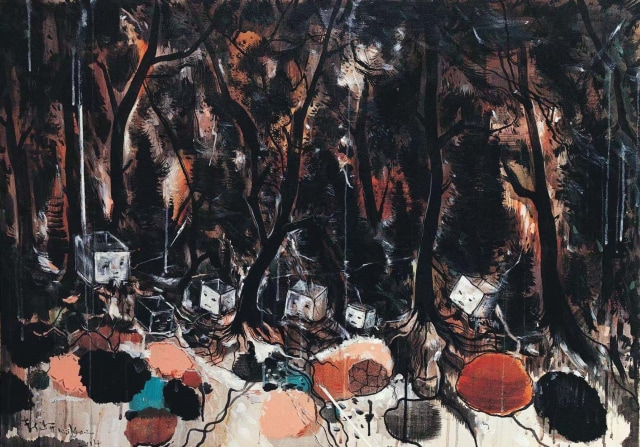The pictorial age has brought about changes in visual channels and popular aesthetic trend. As the young generation grows in this pictorial age, post-70s artists absorb visual experiences from the new media through television and Internet that their creation generally presents “cartoon” virtual images and “self-examining” subjectivity, branded with a distinctive mark of the age. Categorized as “the cartoon generation”, post-70s artists have accelerated innovation in China’s contemporary oil painting with an art language between the concrete and abstract and established a new artistic environment of Chinese contemporary oil painting on a super-realistic aesthetic basis. The visual “autobiographies” of these young Chinese artists are catcher of the spirit of the era; their individualistic experiments construct the pictorial history of contemporary Chinese artists.
As an activist of “the cartoon generation”, post-70s artist Li Jikai embarked on his “autobiographic” artistic road with the symbolic “boy” pictures. The “boy” images usually center the picture; disproportioned limbs, concise, generalized lines sketch a mild and stolid boy; it seems that the boy is either a simplified abstraction of the artist himself or some prototype in current life, trying to connect the picture and the audience. The creation of images is a simplifying and encoding process of some easily recognizable forms, a true movement divided from self-management of the painting language. And the evolution of images not only represents maturation of the artist’s creating method but is also a carrier of his enduring mental activities. Li’s works change from the mild and stolid boys to innocent youngsters in contemplation, from depicting self-pitiful cruelty of youth to critical visual mocking, from dreaming fairy tale scenes to super-realistic sceneries. His autobiographic retrospection has evolved to group images of “waste pickers”, working crowds and silent wildness. These scenes, abandoned by the city life, stage themselves on the outskirts as exiles in the wild or as a tribute to Millet’s “Gleaners”. The artist’s childhood visual experience regresses, pointing to a remote impression before the pictorial age.
Li Jikai has engaged in literature since school days, starting with his poetic creation. That is a life besides painting and an extension of his poetic painting language. But it is the classical literati mindset that the popular, sort of vernacular poetic language tries to reveal, becoming a self-interpretation of the artist’s thought. Poetry and paintings visualize Li Jikai’s pastoral ideal. Some say post-70s young Chinese artists are “non-idealists”. It is not true. Isn’t it an ideal to persistently cling to the art language, to self-concentration and ultimate interrogation? Isn’t it an idealistic sensation to treat painting as lifetime daily work and to write everyday thoughts into poetic verses?
Our museum has always been dedicating to the promotion of contemporary Chinese young artists. Li Jikai has been our research object as early as in 2010, being introduced as an exhibiting artist in the first “Young Artists Research Exhibition” held by Wuhan Art Museum. In 2013, we have presented Li Jikai’s solo exhibiton Lake and Reflections of Light and released his poetry which is a rare case of artists’ writing in China’s contemporary art circles. This time, as an artistic exchanging program between Wuhan Art Museum and Dutch Jan van der Togt Museum, our exhibition aims at promoting benign artistic interaction between Chinese and Dutch artists and opening a window of current Chinese art ecology to Netherlanders. Originated in the west, oil painting has exhibited its vibrant strength in China; artistic creation from different perspectives is surely to go through multi-cultural collisions. Therefore, to seek cultural identity in the mist of differences is not only an artist’s pursuit of value in creation but also a mission and motivation of Wuhan Art Museum.

